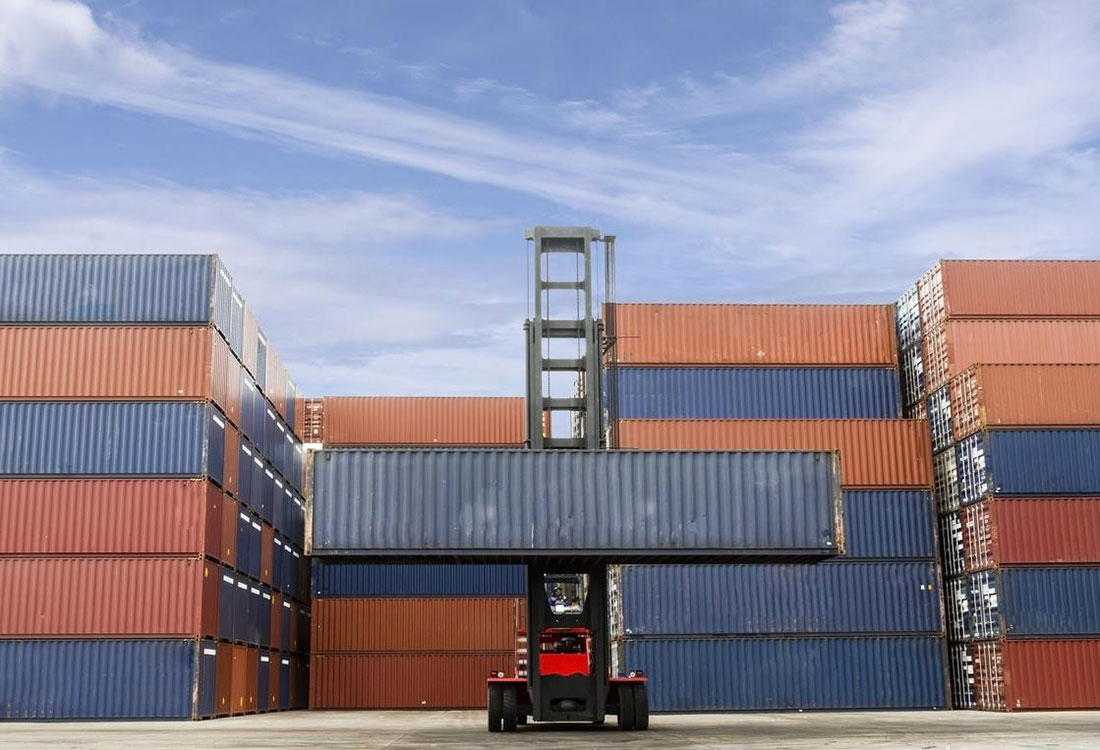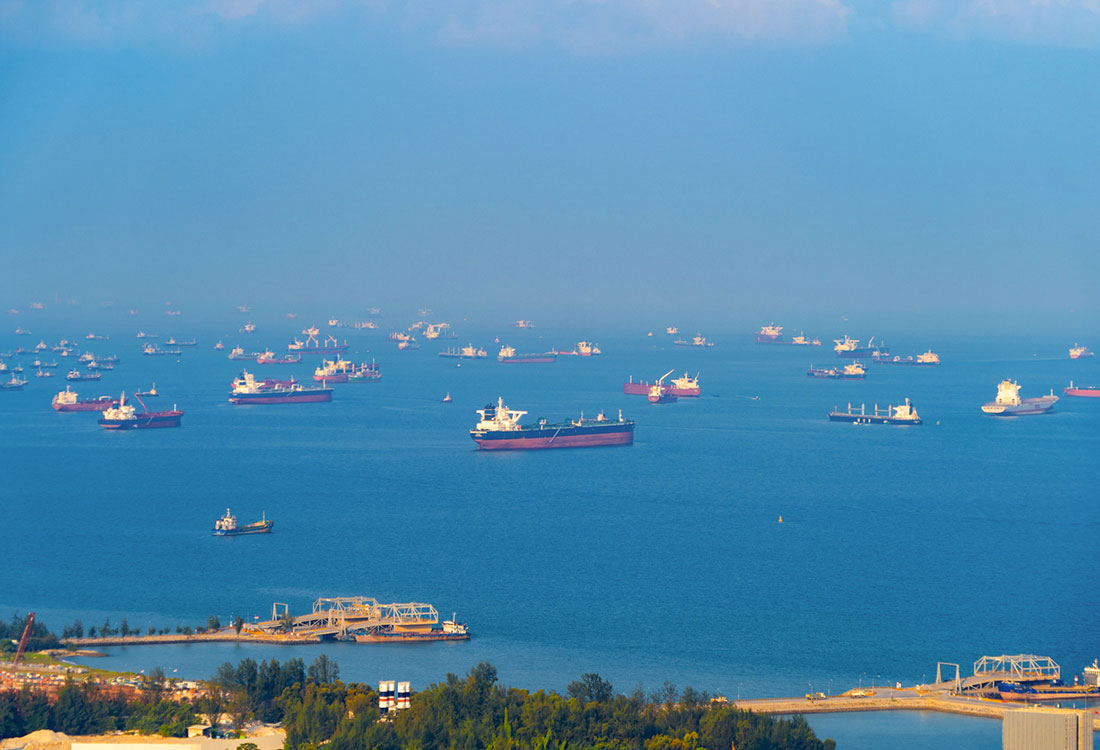Global Trade Surge Sends Freight Rates Soaring
Global goods trade is showing signs of accelerating after last year’s slump, pushing up ocean freight rates and giving some supply chain managers flashbacks to the demand spike that disrupted international commerce three years ago.
This situation brings back memories of the chaos and skyrocketing freight rates during the pandemic, as shippers have learned lessons from COVID-19, and some are bringing their imports forward ahead of the peak season and the potential for a capacity squeeze.
Factors Contributing to the Surge
Several key factors are driving the current surge in freight rates:

- Port Congestion: Port congestion in China and other Asian countries is pressuring an overstretched container shipping market that is already reeling from vessel space and equipment shortages. For instance, in Singapore, severe congestion is leading to berthing delays as long as seven days, significantly longer than the usual half-day wait.
- Labour Strikes: Companies are worried about the Threat of a Canadian rail strike and contract talks for dockworkers in the eastern/southern U.S. and eastern/western Canada. These labour disputes can disrupt port operations and delay the movement of goods.
- Geopolitical Tensions: Heightened trade tensions between the U.S. and China are contributing to the uncertainty and increased costs in shipping. The U.S. government’s recent announcement of more tariffs on Chinese imports adds to the urgency for companies to stock up before these tariffs take effect.
- Red Sea Attacks: Ocean shipping began the year already stretched by Red Sea attacks that forced carriers to send their vessels the longer way around southern Africa rather than through the Suez Canal, increasing transit times and affecting capacity and equipment levels.
Impact on Businesses
The surge in freight rates has several implications for businesses:
- Increased Costs: The cost for a 40-foot container to the US West Coast from Asia jumped 13.4% to $4,915 by the end of May, the fifth straight weekly advance. This is triple what it was in late December, reflecting the tightness in the market.
- Inventory Management: Importers and exporters typically see shipments increase from July to September as retailers look to restock before back-to-school, Halloween, and year-end holiday sales seasons. This early peak season is packing a major punch, and recent feedback from many carriers indicates vessels are completely full.
Strategies for Adaptation
To navigate these challenging conditions, businesses can adopt several strategies:
- Early Ordering: Companies should build in extra lead time to their orders to avoid the peak season rush and secure lower rates. Early ordering helps mitigate the impact of sudden rate hikes and ensures timely delivery of goods.
- Diversifying Supply Chains: By exploring alternative routes and ports, businesses can avoid the most congested areas and secure better rates. Partnering with multiple carriers also helps leverage competitive rates and ensures the availability of shipping options during peak times.
- Utilizing Freight Forwarders: Collaborating with reliable freight forwarders can provide businesses with strategic planning, risk mitigation, and proactive measures to ensure a resilient supply chain. Freight forwarders can optimize transportation routes, select efficient modes of transport, and navigate disruptions seamlessly.
- Leveraging Technology: Implementing advanced tracking systems and data analytics can help businesses gain real-time visibility into shipping operations, forecast demand, and optimize shipping schedules. This enables proactive management of delays and disruptions.
Conclusion
The current surge in global trade and freight rates presents significant challenges for businesses. However, by understanding the contributing factors and implementing strategic measures, companies can navigate these turbulent times effectively. At Universal Logistics, we recommend understanding that rates are going to continue to increase during this period. By staying informed, planning ahead, and leveraging the expertise of logistics providers, businesses can maintain resilient and cost-effective supply chains.
For more detailed strategies and assistance, contact our experts at Universal Logistics.

Elevate Your Supply Chain with Universal Logistics!
Port Congestion in Asia: A Growing Challenge
Port congestion in China and other Asian countries is pressuring an overstretched container shipping market that is already reeling from vessel space and equipment shortages. This issue has significant implications for global trade and logistics, particularly for companies reliant on timely shipping.
The Scale of the Problem
In Singapore, the world’s second-busiest container port, severe congestion is leading to berthing delays as long as seven days. Under normal conditions, a vessel waits about half a day to dock at the port. This delay clearly indicates the broader challenges facing the region’s shipping infrastructure.

Causes of Congestion
Several factors contribute to this congestion:
- Increased trade volumes: As global trade accelerates following a slump, the surge in shipments is overwhelming port capacities.
- Labour strikes and geopolitical tensions are exacerbating delays and disrupting the smooth flow of goods.
- Redirected shipping routes: Incidents such as Red Sea attacks have forced carriers to take longer routes, affecting transit times and equipment availability.
Impact on Supply Chains
The congestion is not just a local issue but has ripple effects across global supply chains. For instance, carriers skipping calls at congested ports will further aggravate the problem at downstream ports that will have to handle additional volumes. This leads to delays and increased costs for businesses, especially during peak shipping seasons like back-to-school and holiday periods.
Strategies for Businesses
To mitigate the impact of port congestion, businesses can adopt several strategies:
- Advance planning: Companies should build in extra lead time to their orders to account for potential delays.
- Diversification of shipping routes: By exploring alternative routes and ports, businesses can avoid the most congested areas.
- Enhanced communication with logistics partners: Maintaining open lines of communication with freight forwarders and carriers can help in managing expectations and finding timely solutions.
At Universal Logistics, we recommend understanding that rates will continue to increase during this period. By staying informed and proactive, businesses can better navigate these challenges and maintain efficient supply chains.
For more detailed strategies and assistance, contact our experts at Universal Logistics.
North American Labour Strikes Threaten Supply Chains
Key Concerns
- Canadian Rail Strike: A possible strike by Canadian rail workers could severely impact the transportation of goods across the country, leading to delays and increased costs.

- Dockworker Contract Talks: In the case of the US East Coast, companies fear they may miss Christmas if cargo doesn’t get into East Coast ports before September 30th, which is the expiry date for a labour contract covering US East and Gulf Coast dockworkers. Similar concerns exist for ports on the West Coast and in Canada, where negotiations are ongoing.
Impact on Supply Chains
- Delays in Goods Movement: Strikes and labour disputes can halt operations at key transit points, causing significant delays in the movement of goods.
- Increased Costs: Companies may incur higher costs due to rerouting shipments, paying premiums for alternative transportation, or storing goods longer than planned.
- Inventory Management Challenges: Businesses reliant on just-in-time inventory systems may face stock shortages, disrupting production and sales.
Mitigation Strategies
To mitigate the impact of potential labour strikes, businesses can adopt several proactive strategies:- Advance Planning: Increase inventory levels in anticipation of potential disruptions to ensure adequate stock during critical periods.
- Alternative Transportation Routes: Identify and plan for alternative routes and modes of transportation to avoid bottlenecks caused by strikes.
- Enhanced Communication: Maintain close communication with logistics providers and partners to stay informed about the status of labour negotiations and potential disruptions.
Strategies to Navigate the Latest Freight Rate Increases
As global trade continues to surge, businesses face increasing challenges due to rising freight rates. Navigating these turbulent waters requires strategic planning and adaptability. Here are some effective strategies to help businesses manage and mitigate the impact of these rate increases:
Understanding General Rate Increases (GRIs) and Peak Season Surcharges (PSS)
Freight carriers implement General Rate Increases (GRIs) and Peak Season Surcharges (PSS) based on market demand and supply conditions. Understanding these charges is crucial for businesses to anticipate cost changes and budget accordingly.

- General Rate Increases (GRIs): These are periodic adjustments, made by carriers to account for changing market conditions, operational costs, and demand fluctuations.
- Peak Season Surcharges (PSS): These are additional charges applied during peak shipping periods when demand for shipping space is high.
Early Ordering and Inventory Management
One of the most effective ways to navigate rising freight rates is to plan ahead and adjust inventory management strategies.- Advance Planning: Place orders well in advance to avoid the peak season rush and secure lower rates. Early ordering helps in mitigating the impact of sudden rate hikes and ensures timely delivery of goods.
- Inventory Buffer: Maintain a buffer stock to manage unexpected delays and avoid last-minute shipping, which often comes at a premium cost.
Diversifying Supply Chains
Diversifying supply chains can reduce dependency on a single route or carrier, offering flexibility and potentially lower costs.- Alternative Routes: Explore different shipping routes to avoid congested ports and high-demand lanes. This can help secure better rates and ensure timely deliveries.
- Multiple Carriers: Partner with multiple carriers to leverage competitive rates and ensure availability of shipping options during peak times.
Leveraging Technology for Real-Time Insights
Utilizing technology to gain real-time visibility into shipping operations can help businesses make informed decisions.- Tracking Systems: Implement advanced tracking systems to monitor shipments in real-time, allowing for proactive management of delays and disruptions.
- Data Analytics: Use data analytics to forecast demand, identify trends, and optimize shipping schedules. This can help in negotiating better rates with carriers.
Building Strong Relationships with Logistics Providers
Strong relationships with logistics providers can lead to better service and more favourable terms.- Collaborative Partnerships: Develop collaborative partnerships with freight forwarders and carriers. These relationships can lead to preferential rates and priority treatment during peak seasons.
- Regular Communication: Maintain open lines of communication to stay updated on market conditions, rate changes, and potential disruptions. This information is invaluable for strategic planning and decision-making.
Adapting to Market Changes
The logistics landscape is constantly evolving, and businesses must stay adaptable to navigate these changes effectively.- Stay Informed: Keep abreast of market trends, regulatory changes, and geopolitical developments that can impact shipping rates and availability.
- Flexibility in Operations: Be prepared to adjust operations, such as changing shipping schedules or routes, in response to changing market conditions.
Global Spotlight Quiz

Name the city known for Bryggen Wharf, a UNESCO World Heritage Site
- Known as the city of the seven mountains.
- The city’s fish market is a must-visit.
- Hiking is a very popular activity, especially on weekends.
- Renowned composer Edvard Grieg was born in this city in 1843.
- One of Europe’s rainiest places. On average, there is some rainfall on 231 days per year.
- Twinned with Seattle, Washington.

For more information about shipping freight to or from this city, contact Debbie McGuire, Director – Freight Solutions.
Quick Tip
Modify Your Shipping Habits to Expedite Your Transit Times
Are you waiting to have enough freight to fill a full container? Take advantage of consolidated services to reduce costs while still maintaining a weekly shipping schedule.
Do you have a time-sensitive truck shipment that can’t be late? Opt for an exclusive load, regardless of the shipment size, and have a dedicated truck make a freight delivery exclusively for you.

At Your Service
Keitty Oliveira
Freight Solutions – Head Office
Keitty Oliveira joined Universal Logistics in July 2022 as a member of our Head Office Freight Solutions team. In this role, she coordinates air and ocean shipments for many longstanding Universal clients. Her attention to detail and excellent customer service skills have made her an invaluable member of our team.
Keitty is actively learning and growing in her role. She recently completed the International Transportation and Trade course as part of the CIFFA Certificate program.
Keitty can be reached by phone (905) 882-4880, ext. 1286 or by email.

Freight Solutions
SMART Logistics
Controlling how freight moves through your supply chain could save you thousands – or more.
Working with us means someone always asks: how can we make this shipment better?
Single-sourced trucking, customs clearance and distribution to expedite your freight shipments between the U.S. and Canada.
Route is produced monthly for the clients of Universal Logistics. Reader comment and story ideas are welcome. Comments of general interest to all Route readers will, with the permission of the writer, be published. Copyright © 2024 Universal Logistics Inc. All rights reserved. Reproduction for any commercial use is strictly prohibited.
Route is produced by Universal Logistics. Editor: Bettina Scharnberg. Email: bscharnberg@universallogistics.ca While every effort has been made to ensure the accuracy of information contained herein, Universal Logistics accepts no responsibility or liability for errors or omissions. Written correspondence should be forwarded to:


